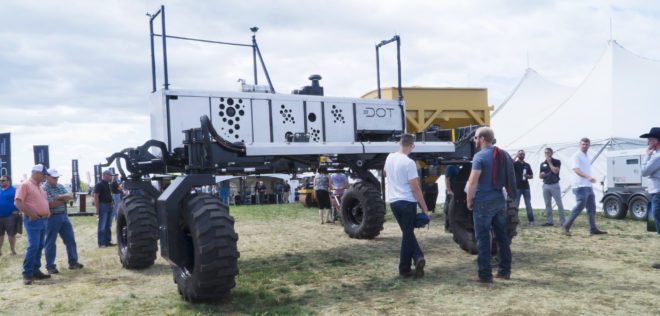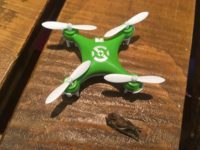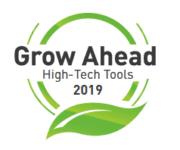

Jul 2, 2019Cutting corners the focus of smart technology ag advancements
In the agriculture world, we’re used to seeing all sorts of food processing innovative technology come to market. Earlier in the value chain, the farmers who grow the food you process are also reaping the benefits of automation and robotics. Here are just some of the many innovations that are changing the face of agricultural production.
Farmers face a slew of challenges throughout the growing season, including inclement weather, short growing seasons and labor shortages. Robotics and autonomous solutions could help farmers address some of those challenges.
Case IH, for example, launched its first autonomous tractor at the Farm Progress Show in Iowa in 2016. Using a tablet, farmers can operate and monitor the tractor from the side of the field while it moves along a pre-mapped route using GPS coordinates.


Case IH has been testing the concept in North America. The company believes the autonomous tractor could free farmers up for more important tasks, as the tractor can be programmed to work longer hours than human operators can.
While the advent of autonomous vehicles certainly raises questions, particularly when it comes to public safety, most concepts include advanced obstacle detection that halts the vehicle when unknown objects are detected. And while most concepts still require human presence, others show promise as truly autonomous units.
Swarm technology
German machinery manufacturer Fendt (AGCO) launched new swarm technology, called Xaver, in November 2017. The programmable and compact Xaver units plant corn in swarms. Each unit weighs about 40 kilograms and can operate for two to three hours before returning to the “mother hub” for refilling and recharging. Recharging takes just 30 minutes.


Not only is the technology efficient, but it also has a similar workload to that of current technology. A swarm of 12-15 units can do the same amount of work as a standard eight-row corn planter, said Sepp Nuscheler, AGCO senior communications manager.
The logistical hub is a housing unit that looks somewhat like a Jawa sand crawler from “Star Wars.” It can house anywhere between five and 100 robotic units, depending on its size.
The benefits of swarm technology are many, Nuscheler said. Because of their small size, the units are safer than autonomous tractors. They’re also designed to be extremely accurate and to reduce soil compaction.
“With autonomous big machines there’s always risk,” he said. “The safety and security of this little robot is very simple.”
DOT technology
In Canada, SeedMaster founder and president Norbert Beaujot also recognizes the value of robotic units. Beaujot is the creator of DOT technology, a U-shaped autonomous power platform that “mates” with other technology, such as seeders, sprayers and land rollers. Loaded with data-gathering sensors, DOT can be manually controlled with a handheld remote or operate in full autonomous mode.
What makes DOT Technology particularly interesting is its move away from the traditional machinery manufacturing models. The corporation takes a collaborative approach, actively encouraging other manufacturers to adapt their technology to become what they call “DOT ready.”
The autonomous DOT unit helps farmers save on fuel, labor, and equipment capital costs, and reduces overall CO² emissions, according to the company.
Already several companies have taken advantage of the technology, including Pattison Liquid Systems in western Canada, which has designed a DOT-ready sprayer. Owner Rick Pattison said the sprayer performs better than most sprayers on the market even though it has no cab.
The Pattison DOT Connect sprayer has features like auto height control and individual nozzle control. The individual nozzle control function, Pattison said, shuts nozzles off to avoid overlaps. The autonomous unit also has turn compensation, so the sprayer slows or speeds up as it turns according to the position of the boom. The boom itself is a dual, recirculating boom, a feature that ensures pressure is exactly the same from one end to the other.
Pattison said the unit addresses a number of big issues in agriculture, the most important being labor.
“Labor is an issue in agriculture these days,” Pattison said. “Trying to find people to put in the glass cage in the tractor all day long is not easy.”
“And when you take the human element away, the chance of mistakes lessens,” he said. “Because an autonomous unit doesn’t have any emotions; it doesn’t want to go faster, go slower or get home for dinner. It just does its job.”
More tech advancements


Around the world, smaller companies have designed autonomous units for very specific tasks. A German company called SPL has designed a battery-powered robot, called Jäti that uses laser beams to kill weeds in carrot crops.
“The robot is trained to detect the crop,” said Ernst Friedrich of SPL. “All that is not crop is weed.”
French company Carré has also designed a weeding robot, called Anatis, for weeding vegetable crops. Anatis uses a comb harrow to manually weed between crop rows. The robot is so precise that in just one pass it not only locates the problem, but also removes it, said Charles Adenot, director of marketing and sales at Carré.


Nothing seems more futuristic than autonomous drones designed for insect control. Designed by Dutch company PATS Indoor Drone Solutions, the mini drones take care of whitefly, golden twin-spot moth, and other insect pests by flying into them, kamikaze style. While they’re currently being marketed for the flower sector, Bram Tijmons, CEO and co-founder of PATS Drones, said they’ll be moving into vegetable and fruit production in the very near future.
— By Melanie Epp, contributing writer
Above, SeedMaster’s autonomous DOT unit. Photo: SeedMaster















